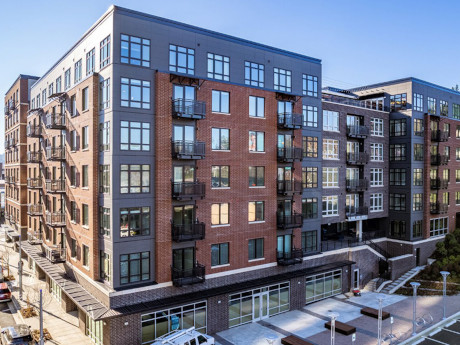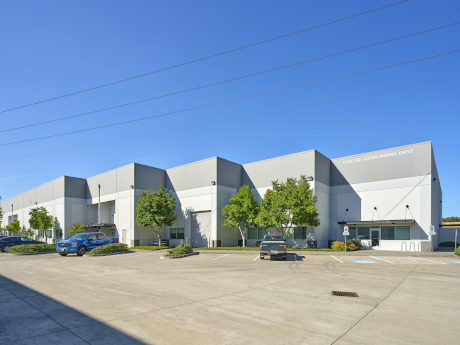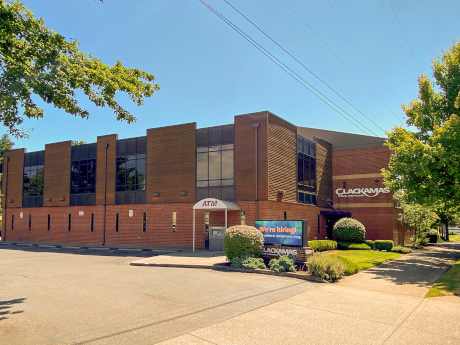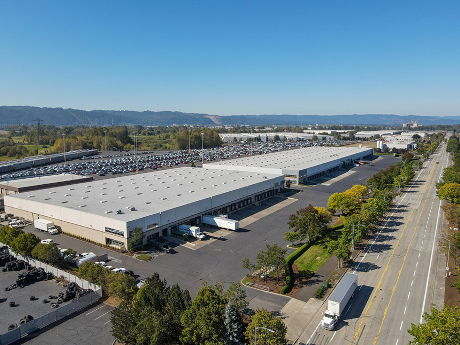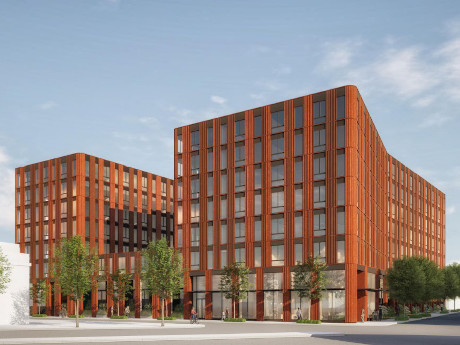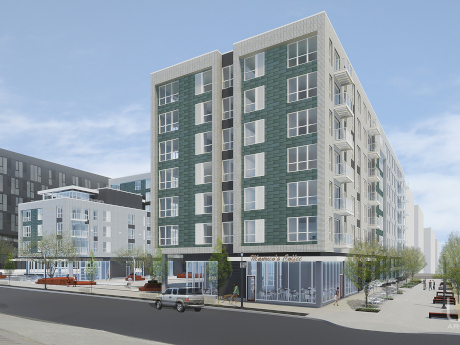— By Josh McDonald, Executive Vice President, CBRE’s Institutional Multifamily Investment Services — Recent data points to positive trends in Portland’s multifamily leasing market heading into the summer months. The rebound in absorption and declining new supply — primarily driven by an active suburban renter base — highlight the resilience and growth potential of the local rental market. The positive leasing trends in Portland have contributed to create an increase in recent investment sales opportunities. Strong leasing performance, as indicated by elevated absorption rates and demand for rental properties, often translates into positive investor sentiment and heightened investment activity in the multifamily sector. This may signal to investors that the market has opportunities for solid returns and growth potential. The green shoots in seasonal leasing are weighted in the suburbs with demand accounting for more than 65 percent of the net change in occupied units, emphasizing a strong preference for suburban living. With more than 3,100 units absorbed in 2024 already, the year is on track to surpass the full-year totals for both 2022 and 2023. This may potentially exceeding the 10-year average as well, according to CoStar. Denser urban areas and the Central Business District also experienced an increase …
Market Reports
— By Gabe Schnitzer, Vice President of Industrial Properties, Norris & Stevens — Portland and Southwest Washington possess a total industrial real estate market of 233 million square feet. Portland is frequently praised as the most affordable city on the West Coast, offering lower average home prices compared to its northern and southern counterparts, while providing a high quality of life for its residents. From 2017 to 2022, Portland’s average annual industrial sales volume was $810 million, with institutional funds accounting for 20 percent of the total sales volume during that time. This represented the highest average industrial volume for the city, with early 2022 boasting nearly $1.4 billion in total sales volume. Then Portland experienced its wake-up call. Ill-conceived legislation, poor leadership and damaging national media coverage caused the city’s reputation to decline. This, in turn, led to a significant drop in the city’s industrial sales volume. From 2022 to 2023, the volume fell by almost $500 million. Despite hopes of stabilization in 2024, sales volume dropped further by nearly $150 million. While some of this decline can be attributed to interest rates and other macroeconomic factors beyond Portland’s control, the impact on institutional investors has been severe. Their …
— By Jessica Ramey, Executive Vice President and Co-Lead for Agency Leasing, and Patricia Raicht, Head of Research for U.S. West and Latin America, JLL — Portland’s office sector is a tale of market cycles, with many signs trending in positive directions. Leasing continues to strengthen, tenants are taking space for longer terms and certain sectors are performing better than others. All of this provides opportunities for those able to execute on them. Portland’s suburban market is second best in the U.S. with a 13 percent vacancy that is significantly below the U.S. average of 21.9 percent. By contrast, the urban market recently tied with Phoenix for the fifth-highest vacancy nationally. Vacancy had been increasing in downtown Portland, but the rate of negative absorption is starting to moderate. JLL anticipates the numbers will turn positive in 2025. Urban/Downtown Market Green-Shoots Rising The revitalization of downtown is making significant progress thanks to efforts by both local government and private-sector groups. As such, the migration of tenants out of the urban core has largely subsided. Nevertheless, as corporations begin to evaluate their space needs and location options, they remain concerned about safety and parking. Many are also increasingly looking at public transit and area amenities …
— By Kenny Houser and Mike Hale, Principals, Capacity Commercial — The industrial real estate sector has experienced a noticeable deceleration with a decline in leasing and sales activities. This trend is particularly evident in Portland where commercial property sales transactions have been steadily decreasing. There was a quarter-over-quarter decline of almost 29 percent in the second quarter of 2023, resulting in a sales volume of $3.4 billion, the lowest recorded since late 2014. The Federal Reserve’s decision to pause its rate hike campaign in response to inflation concerns has impacted the market. With borrowing costs fluctuating, the disparity between buyer and seller expectations has created challenges in determining agreeable property valuations. Simultaneously, leasing activity has also slowed, indicating a return to normalcy in Portland’s industrial market. Total deal volume in the first quarter of this year reached about 1.7 million square feet, a 35 percent decrease compared to the average of 2.6 million square feet per quarter over the previous two years. Despite the slowdown in leasing, the limited amount of industrial space under construction in Portland is expected to maintain a balance between supply and demand. The current construction activity accounts for 1.1 percent of the total inventory, …
— By Samuel Hatcher, Field Research Manager, CBRE — Portland’s historically vibrant office market finds itself at a crossroads, striving to regain its footing in the wake of economic headwinds. The city’s unique blend of natural beauty, progressive culture and thriving tech scene has been a magnet for young professionals seeking an exceptional quality of life. However, recent shifting market dynamics have cast a shadow of uncertainty, compelling stakeholders to navigate a path to recovery with adaptability and resilience. Portland’s overall office market vacancy is currently 22 percent across the metro area. Downtown vacancy — which includes the Central Eastside, Northwest Close-in and Lloyd District — is at about 28 percent. Of that vacant space, 3.3 million square feet is Class A. Moreover, sublease availability across the overall office market is up 67 percent year over year and investment remains paused. Capital is waiting on the sidelines due to elevated interest rates and generally tighter financial conditions. Despite these stats, the market is showing some bright spots. The rate at which newly available sublease space is being put on the market has slowed compared to when this narrative was dominating headlines. There’s even a chance of a slight quarter-over-quarter decrease …
— By Keegan Clay, Executive Director, Cushman & Wakefield — The Portland metro industrial market is well poised for investment and rent growth into 2024, despite an increase in sublease space coming to market. Portland has experienced many great trends, particularly in the past few years, including year-over-year double-digit rent growth, compressed cap rates, positive net absorption (occupancy growth), strong tenant demand, all-time low vacancy at 2.5 percent and land prices tripling in a short timespan. Such movement has led to increased competition and investment in the Portland region. We have seen an increase in sublease space hitting the market over the past five months to the tune of more than 2 million square feet. The majority of this relinquished space has stemmed from just a few users. Many of these subleases are a result of acquisitions with companies looking to increase efficiencies by eliminating redundancies. Some industrial users have consolidated out of market, including a major home goods business (648,000 square feet), while others have grown their real estate position in Portland. This includes a leading B2B electrical and industrial distribution company (293,000 square feet). Year to date, we have yet to see any of the larger …
— By Daniel Natsch, Senior Managing Director and Partner, Ethos Commercial Advisors — Portland made it onto the national scene even before the last economic cycle. It’s a charming and relatively inexpensive West Coast market that boasts a great culinary scene, never-ending outdoor activities and its own sense of weirdness. It’s no wonder that Portland’s ticket to the “big time” came by way of population growth throughout the 2010s, spurred by young, highly educated professionals. Alongside that growth came the need for more housing. Institutional capital took note and began targeting Portland for investment. The development boom of the 2010s eventually began to slow. Portland’s multifamily industry took another blow when Inclusionary Zoning legislation was passed. To beat affordable requirements, developers grandfathered as many projects as possible, creating a huge wave of entitled properties. Many of these projects would see their way through permitting, and the pre-inclusionary housing moniker became more valuable to investors. At the time, it appeared that significant in-migration would offset the significant deliveries stacking up in the pipeline. Then came 2020. Downtown Portland became a ghost town as employees stayed home amid the pandemic. It was quiet until large crowds took to the streets to speak …
By Jordan Carter, Executive Vice President, Kidder Mathews Much like the city itself, Portland multifamily owners are no stranger to adversity — whether that refers to the weather, news media or the instability of today’s economy. There’s no doubt the rising interest rate environment will have an impact on the lending market for both refinances and sales in the short-term, but the good news is market fundamentals in the Portland metro remain solid. At 4.53 percent, our vacancy rate sits well below the national average of 4.98 percent, per CoStar. The average apartment rent is now $1,600 per month, thanks to year-over-year rent growth of 8.5 percent, which CoStar projects to remain near 5 percent for the next couple years. New construction, which peaked at nearly 13,000 units in 2018, has slowed dramatically due to legislative and policy changes that have disincentivized developers. These challenges have been magnified by elevated material costs and an arduous permitting process. Year-over-year deliveries of 4,000 units illustrate the dramatic slowdown, as they’re well below the supply needed to meet a demand of more than 10,000 new units annually. The hot single-family home market also continues to push prospective home buyers out of the market. …
By Mike Holzgang and Brad Christiansen, Executive Vice Presidents, Colliers Portland is seeing a number of employers reassess their post-pandemic workplace. Generally, this translates to companies downsizing to account for hybrid work models, with smaller/shared workstations and more conferencing space. New development has slowed in anticipation of an increased interest rate environment, historically high construction costs and supply chain constraints. Construction timelines are protracted due to all of those issues by as much as 50 percent to 100 percent. Most of the new construction coming online in Portland was initiated before the pandemic. Notable downtown projects include two mixed-use developments named 11W and Block 216. Both of these projects will add significant office space to the city’s popular West End district. The first, 11W, should deliver this year, while Block 216 will deliver in 2023. Construction in the suburban submarkets has also been slow, but we wouldn’t be surprised if it starts to pick up within the next 18 months or so. Interest and Effect Depending on where you are looking, the market is favorable for both landlords and tenants. It is a landlord’s market in the suburban areas, particularly in those south and southwest of Portland. The Central City …
By Tim Harrison, Research Manager, JLL After one the strictest and longest shelter-in-place orders in the nation, Oregon is officially back open for business and all signs point to a strong recovery in Portland. People are travelling again, with airline passengers through Portland International Airport totaling more than 1 million in May. This represents about 63 percent of the normal 2019 monthly average, according to the Port of Portland’s aviation stats. Perhaps most importantly, people are returning to the downtown core for both business and pleasure with weekly visits through Pioneer Mall — the center of downtown — up to about 70 percent of 2019’s average weekly visits, per Placer.ai. This optimism is transferring to the office market, where Portland leasing activity is up more than 33 percent year over year. The recovery is being led by industries old and new. Out in the suburbs, Portland’s largest apparel companies are expanding on campus, while new leases were signed by Lululemon and On-Running in newer creative spaces on the urban fringe. Portland’s life sciences sector is approaching a critical mass as Bay Area company Twist Biosciences entered the market by absorbing 215,000 square feet. Meanwhile, Vancouver, Wash.-based AbSci raised more than …
Newer Posts


